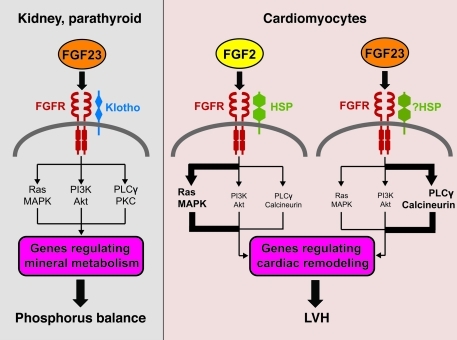Figure 8. Schematic representation of FGF23 signaling in classic target cells and cardiomyocytes.
In the kidney and parathyroid glands, FGF23 signaling requires FGFR and the coreceptor klotho. FGF23-klotho binding to FGFR stimulates autophosphorylation of the receptor tyrosine kinase and induces signaling through 3 major pathways: Ras-MAPK, PI3K-Akt, and PLCγ-PKC. FGF23 regulates phosphorus balance by altering expression of genes involved in parathyroid, vitamin D, and phosphorus metabolism. In cardiomyocytes, FGF2 signaling requires FGFR and heparan sulfate proteoglycans (HSP) as coreceptor and signals primarily through the Ras-MAPK pathway. Binding of FGF23 to FGFR on cardiomyocytes stimulates autophosphorylation of the receptor tyrosine kinase independent of klotho, which is not expressed in cardiomyocytes, and signals primarily through the PLCγ-calcineurin pathway. Whether HSP acts as coreceptor remains to be determined.

